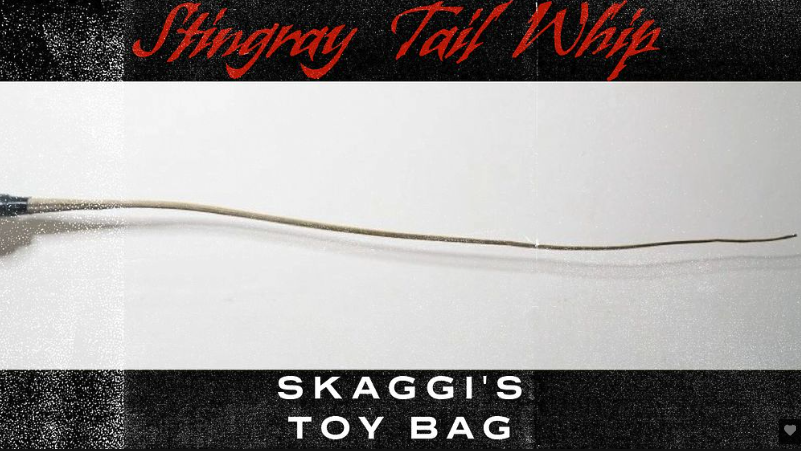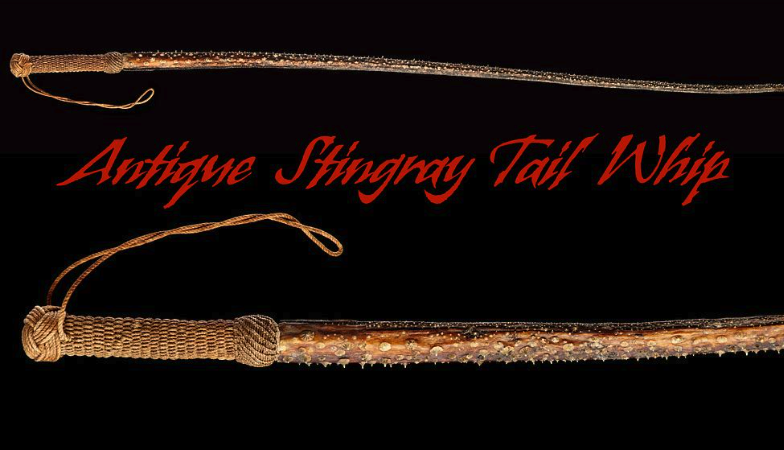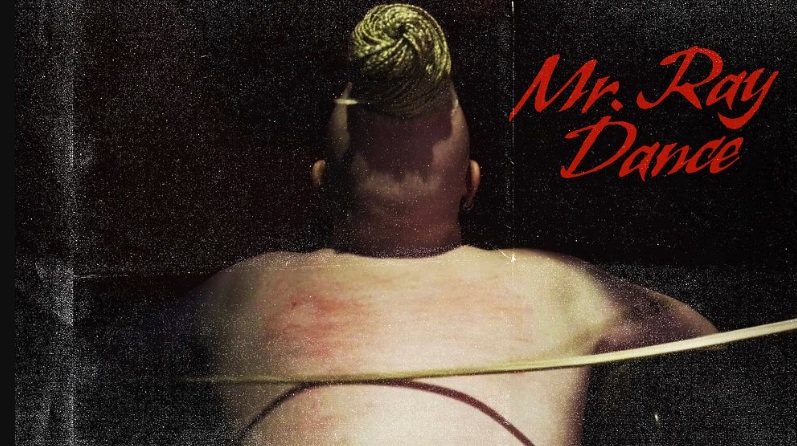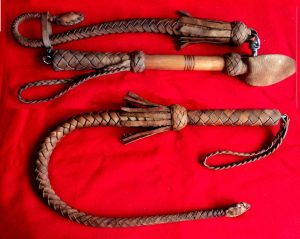
Stingray tail whips have been traditionally used across Southeast Asia over the centuries. They are also known as Buntot Pagi in the Philippines.
These whips are unique and intriguing tools with a rich history and have served various purposes, from weapons in combat to tools for corporal punishment.

Making a stingray tail whip is a long and detailed process that utilises the natural durability and flexibility of a stingray’s tail. Suitable tails are typically selected from the whiptail family. These tails are long, flexible, and equipped with venomous barbs, making them ideal for crafting whips. First, the cleaning process involves removing any excess tissue while retaining the sharp barbs that run along the length of the tail. The tail is then dried and cured. This step is crucial to ensure the tail remains durable and flexible. The curing process can take several days to weeks, depending on the climate and specific techniques used. Then, a handle is often attached to the base of the tail for better grip. This handle can be made from wood, bone, or other sturdy materials and is typically wrapped with fibres or leather for added comfort and control.The history of the stingray tail whip is deeply rooted in Southeast Asian culture. These whips were not just tools of punishment but also played a significant role in combat and folklore. They served as a reliable weapon in close-quarters combat. The natural barbs could cause significant injury, making it an effective tool for self-defence. Warriors would use these whips to keep opponents at bay, often pairing them with other weapons like daggers for maximum effectiveness.The stingray tail whip was also used for corporal punishment. Its painful sting served as a deterrent and instilled fear and compliance. The whip’s use in punishment extended to various Southeast Asian cultures, where it was employed to maintain order and discipline within communities.Beyond practical uses, the stingray tail whip holds a place in Filipino folklore. It was believed to ward off evil spirits, particularly the shape-shifting aswangs. Ceremonially, these whips symbolised protection and strength.What makes the stingray tail whip stand out from other traditional whips is its natural texture and flexibility. It is naturally equipped with sharp, venomous barbs. These barbs are strategically retained during the crafting process, making the whip especially painful and effective in combat and punishment. However, once the tail is removed and processed into a whip, the venom typically dries out and loses its potency. The barbs still retain their sharpness and can cause significant injury, but the risk of envenomation is minimal after the curing and drying process. This texture is something leather whips or rattan canes cannot replicate. The flexibility of a stingray tail is another distinctive feature. This natural flexibility allows for more precise and powerful strikes, making them superior in certain scenarios. Stingray tails are incredibly durable. They are resistant to wear and tear. Traditional leather whips and rattan canes, while effective, do not possess the same level of resilience. Leather, while strong, can dry out and crack, needing regular treatment. Rattan canes, though flexible, can splinter and break with heavy use. The stingray tail, however, remains robust and effective with minimal maintenance.
PERSONAL EXPERIENCE AND NOTES ON KINK PLAY USE
Over six years ago, a friend picked up a stingray tail whip for me on the coast of Thailand. It’s on the longer side, and those are harder to find, with the total body length around 110 cm. She warned me to use it with care and showed the cuts her Dom gave her with a similar whip (they looked like her skin was sliced). She also warned me about them being very dry and complained about bits breaking off, leaving a few splinters behind.When I got my hands on mine, it was clear that it was outside of my risk profile for kink play. But… a traditional whip… local… I couldn’t just leave it as a cool decoration piece. I decided to see if I could find any information online to see if it could be somehow saved or restored. When I found the details on the initial curing of the whips, I thought oiling it for a week or two wouldn’t make it any worse. Amazingly, reapplying exotic leather oil daily for two weeks did the job! The whip was literally “drinking” the oil in, regaining its flexibility and texture. That was interesting to watch and felt great when it finally got back to the way it was meant to be.Once it was restored to its glory, I gave it a few coatings of leather waterproof sealing and re-wrapped the handle. I came across a piece of writing online describing an experience of a martial artist in the Philippines who worked out with a stingray whip outside for about an hour, while holding directly onto the tail. He experienced what he described as toxic poisoning symptoms and blamed it on the constant direct contact with the tail. Although the chances of that are very slim, I like to have my handle wrapped, just in case.

When using it as a top, it feels to me like a cane with the flexibility of a whip. It is long enough to make it into a loop, and that is a fun way of using it too. My typical warm-up consists of cane tapping techniques with light loop swats… I also like to slowly drag the body of the whip along my partner’s skin and let them feel the bite of the barbs.
Actual strikes are long and broad, and not much force is required at all to leave distinct marks. I add more wrist drag at the end if I am aiming to cut. I have found that reclining (flat on the stomach on a massage bed) or semi-reclining (kneeling with the upper body elevated) works best for these types of whipping. It also works really well for intentional wrapping, but not many bottoms can usually take a lot of it.

The bottom line is that it’s a serious weapon and can inflict a lot of serious damage, which falls outside of most people’s hard limits and risk profiles. So, for anyone willing to pick up a stingray tail whip and learn how to use one, remember to handle it responsibly and with care.



